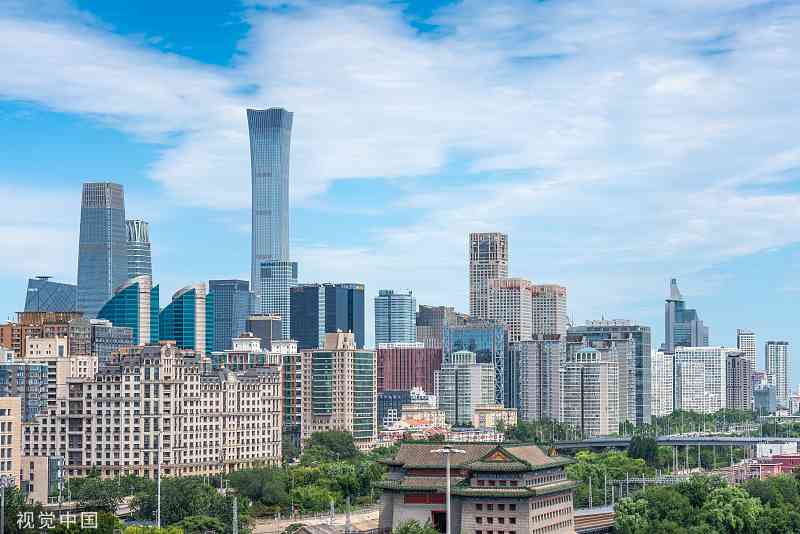
Globally, transport and logistics account for about a quarter of CO² emissions. The figure is expected to rise, through the years. Air freight is the worst polluter, producing an average of 500 grams CO² per tonne and kilometre travelled.
On the other hand, road freight is reported to produce between 60g to 150g per tonne and kilometre travelled. Rail compares better with 30g to 100g in emissions. Container ships have the least pollution, with 10 to 40g per tonne and kilometre. However, if we factor in electrification of the rail system, then rail achieves completely zero emissions.
It is crucial to also emphasize that, in thirty years from now, petroleum will be scarce, if not completely unavailable. As the world approaches a worsening climate situation and crisis of petroleum, the obvious transportation method for moving passengers and freight, will be electric railway. It is in this awareness that the advanced and emerging economies of; U.S.A., China, Russia and the E.U, are investing massive amounts in their railway networks and crafting paradigm shifting master plans.
Apart from climate change, and depleting oil resources, there are yet more advantages which make rail a great option for transportation. With a larger load capacity than trucks, a freight train can have up to five hundred times more goods (15 000 tonnes). The large volumes and long distances typically travelled, mean that the cost can be cheaper. Rail is not susceptible to traffic congestion, whilst accidents are extremely rare. The safety means that customers' goods and lives are relatively safer when moving by train. Moreover, rail is resistant to weather fluctuations, when compared to air or sea freight.
Nevertheless, it is fair to also outlay some key disadvantages of rail. A notable challenge with rail is that, it is mainly used in intermodal transportation. This means that some companies do not have access to rail infrastructure and have to use both truck and rail, at the least, when moving their goods.
Resultantly, due to the logistical and administrative tasks involved, a number of firms might settle for exclusive road transportation, as it may be more direct and efficient. Moreover, in some regions, rail infrastructure is not uniform, from one country to another. This is especially a problem in Europe, where different track gauges are used for the rail network in the different countries. Regulations also differ between countries. Such variations tend to increase the likelihood of costly delays and expenses. However, the situation is largely different for the SADC region, as track gauges and regulations are generally uniform.
Compatibility of the NRZ
In Zimbabwe, the main railway operator is the National Railways of Zimbabwe (NRZ), which is responsible for approximately 3 500 kilometres of rail network. At its peak, in the late 1990s, it used to move 18 million tonnes of cargo, per year. During that time, it was a major employer with 600 locomotives and 3 000 passenger carriages. If there was no break in momentum, it would have been a regional powerhouse by now, employing much more, earning huge revenue, and contributing significantly to GDP. However, from the year 2000, the operator took a downward turn, to the extent of reverting to steam engines and discontinuing some of its services, along the way.
- The brains behind Matavire’s immortalisation
- Red Cross work remembered
- All set for inaugural job fair
- Community trailblazers: Dr Guramatunhu: A hard-driving achiever yearning for better Zim
Keep Reading
If the NRZ is unprepared for the transition from Internal Combustion Engines to renewable energy, then the nation has a regrettable energy security strategy. As nations prepare for the depletion of oil, Zimbabwe's own NRZ should be capacitated to provide both freight and passenger services. In order to achieve this, the railway operator has to be resuscitated and capitalized so that it becomes feasible for it to have strategic goals. Admittedly, the current management have been trying to attend to some of its challenges, which still need more effort and resources to turn around. With the aim to evaluate the state of the company and its preparedness to serve the nation in the coming decades, some of its challenges and accomplishments are explained below.
For this year, the general manager announced that the NRZ is targeting to move 3 million tonnes of freight, as it aims to reach its full capacity. This is still a fraction of its past achievements (18 million tonnes). In its possession now, the rail operator has less than a hundred locomotives and a few hundred carriages.
As a result, freight trucks have increased in volume on the country's highways, as they serve the gap created by the struggling government transporter. The revitalization of the NRZ will relieve some of the challenges associated with road freight. These include, increased accidents, congestion and damage to road infrastructure. The destruction on Bulawayo- Victoria Falls road, is an apt example of the negative impact of road freight. Since rail is typically an intermodal form of transportation, employees in road freight will still be relevant to a logistics network which has greater rail participation, although their input may be reduced.
Lack of robust security systems has been a major problem for the NRZ, as property worth, $237 573 and $216 702, was lost to theft and vandalism, between 2021 and 2022. Copper cable theft through the years, left the carrier using mostly diesel-powered locomotives. It is in this context that it is advisable for the NRZ to capacitate and increase the size of its Loss Control department, if the operator is to remain viable. ICT based security solutions, mobility (vehicles, motorcycles), and awareness campaigns against theft and vandalism, should be funded adequately for meaningful impact on the operators bottom line.
Until recently, some major administrative inefficiencies have been drawing back efforts towards expansion of operations and revenue. For instance, Zimbabwean locomotives could not proceed into Botswana and vice versa, although the rail track is uniform and all technical issues permeate. This meant that a Zimbabwean locomotive would make a U-turn at the border, whilst a Botswana registered locomotive would fetch the wagons and cargo left behind. Resultantly, there were delays running into an average of four or five days, as cargo stalled at the border. To address this, in December 2022, a Through Working Agreement, was signed between the two countries. The agreement ensures that locomotives from Zimbabwe, can go all the way to Francistown and those from Botswana can reach Bulawayo, both of which are 100km into the other side's border.
Chrome and coal are the traditional freight commodities for the transporter. New activity in mining alongside partnerships, are improving revenue and operations. As of July, Kuvimba Mining House, Mpeta mine, Bikita Minerals and Zulu lithium have massive lithium resources which will be moved by the rail carrier and should aid in its growth.
The Minerals Marketing Corporation of Zimbabwe (MMCZ), is also influencing some miners to use railway for the movement of their commodities, thereby improving the NRZ’s business. Arcelor Mittal and Trells, from South Africa, are some of the new foreign clients purchasing mainly coal and coke from the country's coal fields. Additionally, Tanzania has new clients interested in the country’s coal which is also being transported to them via rail.
Public Private Partnerships for the refurbishment of locomotives and wagons have been roped in, to improve capacity. In this scheme, the larger customers repair wagons, buy spare parts, and refurbish locomotives. The new capacity created is then dedicated to the particular customer.
Dry ports are being targeted for Lochinvar, Rutenga and Lions Den, which will serve as intermediate container terminals. Such terminals make rail more accessible to those companies which can only access the rail network through freight trucks. Improving intermodality in this way, will increase revenue.
High labour turnover, is being addressed through housing incentives and in-house training of artisans.
To operate at full capacity, the entity currently targets to obtain, 122 locomotives, 6130 wagons, and 170 coaches. Negotiations for the required stock are ongoing, with firms in India, whilst Treasury is expected to fund the deal, when agreed on.
Since passenger transportation is currently and perennially loss-making, it is advisable to dedicate the rail network predominantly to freight transportation in the medium-term.
Lessons from prominent economies
The U.S., has the largest rail network in the world (225 000 km). It is also rated as the most efficient (for freight) as it has a 40% share of total long-distance freight volumes, domestically. Concurrently, it is extremely profitable. It is vital to state that the overall rail network in the U.S. is mainly controlled by the private sector, with all freight movements, under private firms. A 2018 study, by the American Association of Railroads, reported that, seven of the largest railroad operators, contributed over 1% to U.S. GDP, and created more than 1 million jobs.
On the other hand, the government owned passenger rail company (Amtrak), rents some of its track from the private sector and is a loss-making, inefficient entity. Amtrak has a repair backlog of $45.2 billion dollars, serves loss making corridors and is regularly unpunctual. As a result, it has very poor passenger ridership numbers.
In that regard, it will prove more difficult for the U.S. to move passenger transportation from road and air, to the railway. Nevertheless, what Zimbabwe can emulate and learn is that, private sector involvement in railway, is imperative for growth. A valuation of NRZ's assets and incorporating private capital is advisable. If refurbishing the whole 3500km network is expensive, then joint investments on key lines such as those leading to DRC, Maputo, Beira and Durban, on a corridor basis (one at a time) are encouraged.
In terms of high-speed passenger rail (HSR), China leads the world with a 42 000 km network. This is twice what the rest of the world has (under 20 000 km). The U.S. has failed to match Chinese development in this area, since HSR is strictly for passengers, instead of freight. With poor passenger rail ridership, it has proven costly and impractical, for the U.S. to emulate. HSR can cost as much as $100 million per mile (1.6 kilometres) and is extremely expensive to maintain. It is fair to say that, Zimbabwe does not seem ready for it either.
- Tutani is a political economy analyst. — [email protected]











